At IPA Physio, we know that the right footwear plays a crucial role in movement, performance, and injury prevention. Many people overlook how shoes impact their body mechanics, often leading to discomfort or even pain. Our expert physical therapists take a whole-body approach to ensure your footwear supports your unique movement patterns. Whether you’re an athlete or simply want to stay active without pain, physical therapy can help you make the best choice for long-term comfort and performance.
How Physical Therapy Can Help You Find the Right Footwear for Performance and Injury Prevention
Not all shoes are created equal. Sure, they might look the part—sleek, stylish, and seemingly built for performance—but dig a little deeper, and you might uncover a surprising story. Shoes, especially athletic ones, can make or break your physical performance, injury risk, and overall comfort. Yet many of us assume any new pair fresh out of the box will do the job. Unfortunately, this is not true. This is why physical therapists often emphasize the importance of proper footwear, as it plays a crucial role in movement mechanics and injury prevention.
Our physical therapy clinic locations:
Portland
Orange County
Dallas
Steamboat Springs
New York
Years ago, I visited a Nike outlet, eager to snag a deal on a pair of their popular Pegasus running shoes. I grabbed six different boxes of size 12s, and put each pair through a series of tests—checking for flexibility, balance, and adaptability. Shockingly, not one passed. I left the store empty-handed, a little frustrated, but also intrigued.
Years later, I read Shoe Dog, the memoir by Nike founder Phil Knight, and the pieces of the puzzle started to click. Knight revealed that the same shoe model is often produced in multiple factories worldwide. Shoes with minor manufacturing defects or quality issues are sent to outlet stores to be sold at discounted prices, while the highest-quality pairs go to retail stores at full price. That outlet experience suddenly made sense—and it hammered home an important lesson: never buy shoes without testing them first.
At the end of the day, choosing the right footwear isn’t just about style—it’s about supporting your body’s movement and reducing injury risks. If you’re dealing with pain or discomfort while running, training, or even walking, physical therapy can help identify underlying issues and ensure your footwear is working with you, not against you.
Why the Right Shoes Matter
Think of your shoes as the foundation of a building. If the foundation is shaky or uneven, the structure above it won’t be stable. The same applies to your body. Poorly designed or poorly manufactured shoes can throw off your alignment, alter your gait, and put unnecessary strain on your muscles, joints, and tendons. Over time, this can lead to pain, discomfort, or even injury.
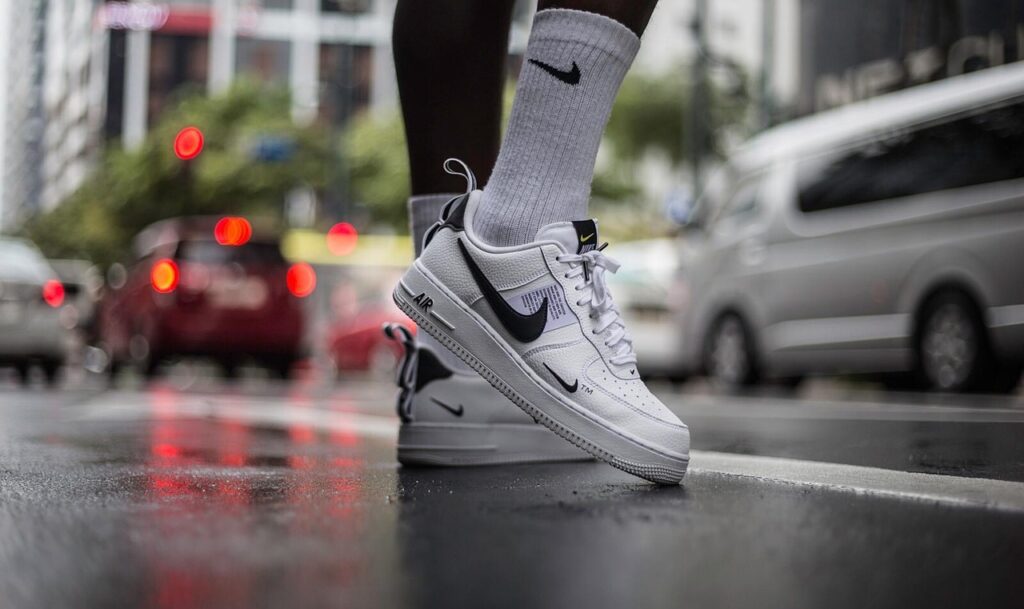
It’s not just about what’s comfortable in the store. A shoe might feel fine for the first few runs but fail to provide the long-term support and adaptability your body needs. That’s why it’s crucial to perform a few simple tests before you commit to a pair. These tests pertain to the structure of the shoe and how they are manufactured, but do not highlight all of the nuances of how your foot interacts with your shoe. For instance, the shoe’s insole may alter movement patterns throughout your body. This is harder to test on your own, and that’s where we can help!
The Shoe Test: Six Steps to Finding the Perfect Pair
Here’s how to separate the winners from the duds when buying athletic shoes:
- Horizontal Balance
Place the shoe on a flat surface and observe. It should sit perfectly level with the ground. If it’s tilted or angled in any way, that’s a red flag. Shoes that aren’t horizontally balanced can throw off your alignment and increase your risk of injury.

- Heel Rocking
Push down on the heel. Does it have a slight “give” or rocking motion? It should. Ideally, the shoe is weighted slightly toward the front of the heel, not all the way in the back. A rigid or overly heavy heel can strain your Achilles tendon and calf muscles.
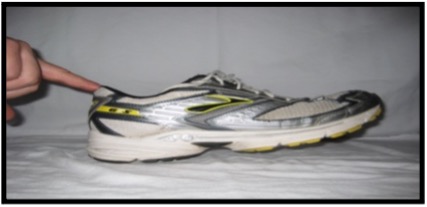
- Forward Rocking
Push down on the toe and watch how the shoe rocks. A good shoe will rock straight forward, not tip to the side. Shoes that bias inward or outward can interfere with your gait, potentially leading to issues like foot pain, ankle instability, knee pain, or even pain further up the chain.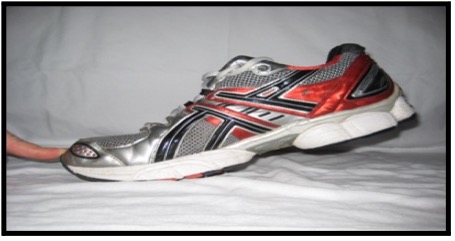
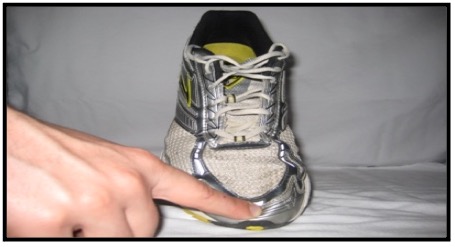
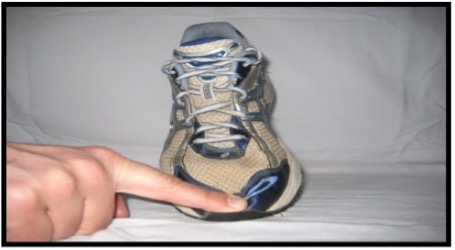
- Heel Landing
Push down on the toe and let the heel drop back down. The heel should land softly and evenly. If it slams down hard or feels rigid, it may be too weighted in the back, which can put undue stress on your Achilles tendon and calf. Uneven landing—where the heel hits more on the inside or outside—can exacerbate issues like flat feet, plantar fasciitis, or even dramatically increase the likelihood of an ankle sprain.
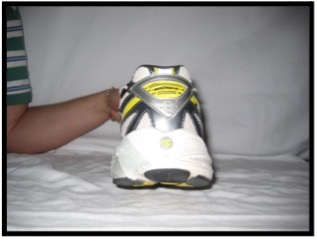
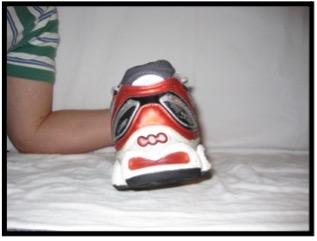
- Twist Test
Hold the shoe at both ends and twist it, like wringing out a towel. A good shoe will twist evenly in both directions. This is very important for sports involving lateral and rotational movements. Equal twisting allows your foot to move naturally during pronation (rolling inward) and supination (rolling outward), reducing strain on your muscles and joints.

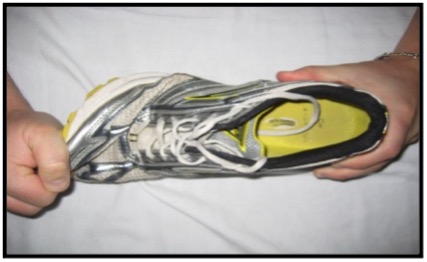
- Shoe Bending
Keeping the heel of the shoe vertical, push the toe of the shoe into the ground and slowly lower the sole from toe towards heel. Observe for a smooth curve, without any significant hinge points. The shoe should conform to your foot’s natural movements and not try to force movement where you don’t have capacity to move. We see this as playing a role in metatarsal stress fractures and toe pain.

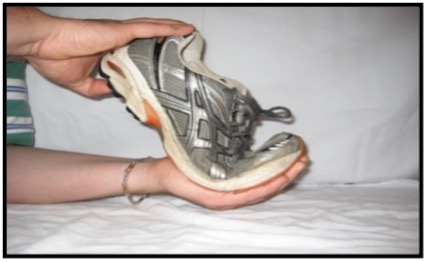
Just Because They Are In The Same Box Doesn’t Make Them ‘Solemates‘
When shopping for new shoes, we suggest you grab all boxes of your size, perform these tests on all shoes, identify the best right shoe and the best left shoe, and make your own perfect pair!
The Story Your Shoes Tell
Beyond helping you choose new shoes, these tests can also tell you when it’s time to retire your current pair. Running shoes are generally recommended for 300–500 miles, but that range is broad. Factors like your running style, body weight, and the surfaces you run on can affect how quickly your shoes wear out. Periodically applying these tests after the 300-mile mark can give you a clearer picture of whether your shoes are still supporting you or if it’s time for a new pair.
Why You Should Be Wary of Outlet and Online Purchases
Here’s the hard truth: outlet stores are often a gamble. Shoes sold at outlets are typically there for a reason—they may have minor defects, quality issues, or design flaws that didn’t make the cut for full-price retail shelves. While they might look fine at first glance, they may not hold up to the rigors of regular use, and they’re unlikely to pass the shoe tests.
Online shopping can also be tricky. While it’s convenient, buying shoes without trying them on can lead to disappointment. If you do choose to shop online, make sure the retailer has a generous return policy so you can test the shoes thoroughly before committing.
How Your Shoes Impact Your Health
Wearing the wrong shoes isn’t just an annoyance—it can have real consequences for your health. Poorly designed or worn-out shoes can:
- Increase stress on your feet, ankles, knees, and hips.
- Lead to conditions like plantar fasciitis, shin splints, or Achilles tendonitis.
- Exacerbate existing alignment issues, causing pain to radiate up the kinetic chain.
Gregg Johnson, co-founder of IPA Physio, developed these tests as part of a holistic approach to preventing and treating injuries. His insights, combined with my own experiences, have taught me the importance of paying attention to the small details when it comes to footwear. After all, the right shoes aren’t just about performance—they’re about longevity, comfort, and keeping you pain-free.
Don’t let flashy designs or outlet deals lure you into a bad choice. Whether you’re training for a marathon, hitting the gym, or just going about your day, your shoes should be an ally, not an obstacle. Performing these simple tests can save you from discomfort, injury, and wasted money.
Remember, shoes are more than just an accessory—they’re your body’s foundation. Invest wisely, test thoroughly, and never settle for less than what your feet deserve.






